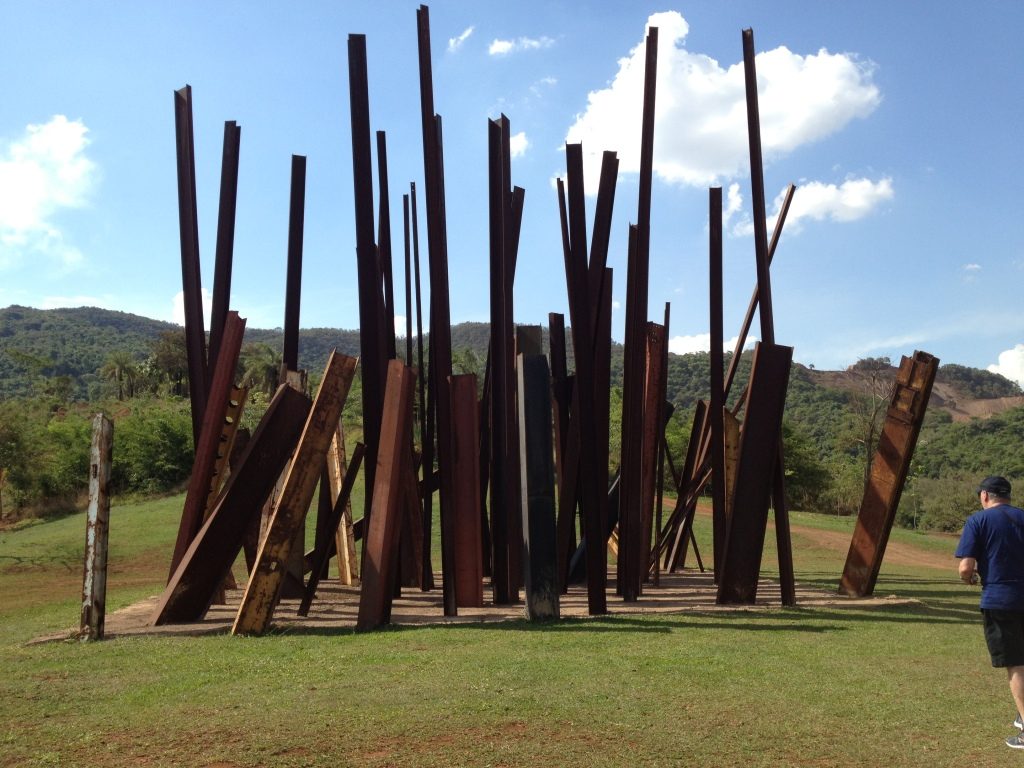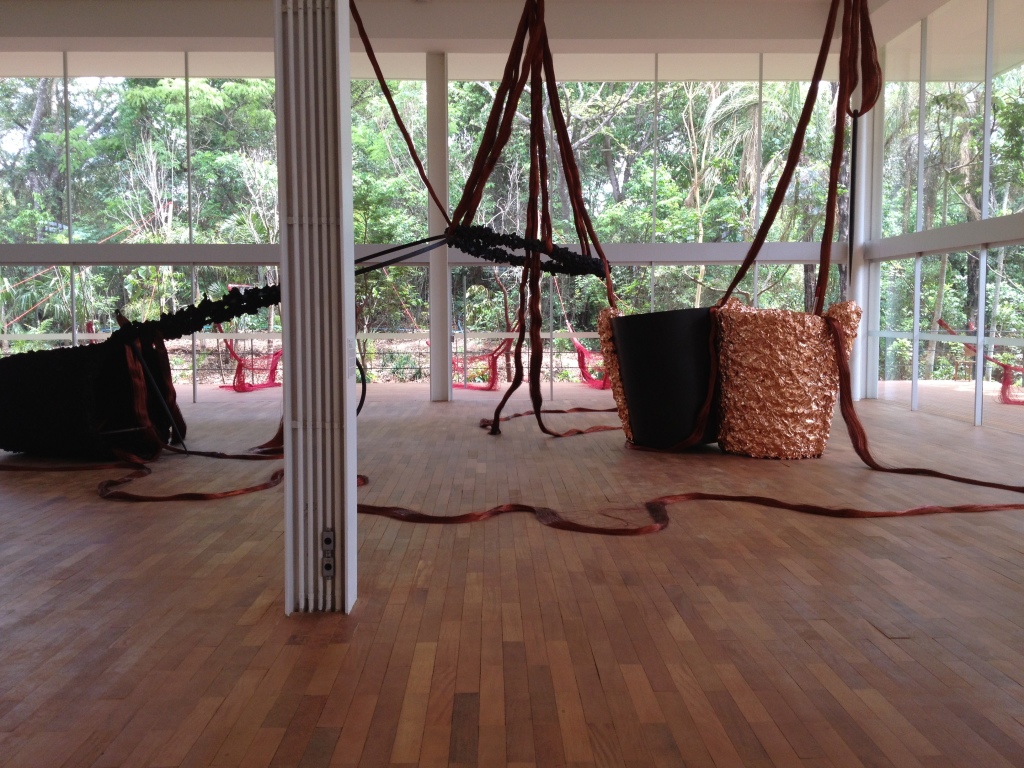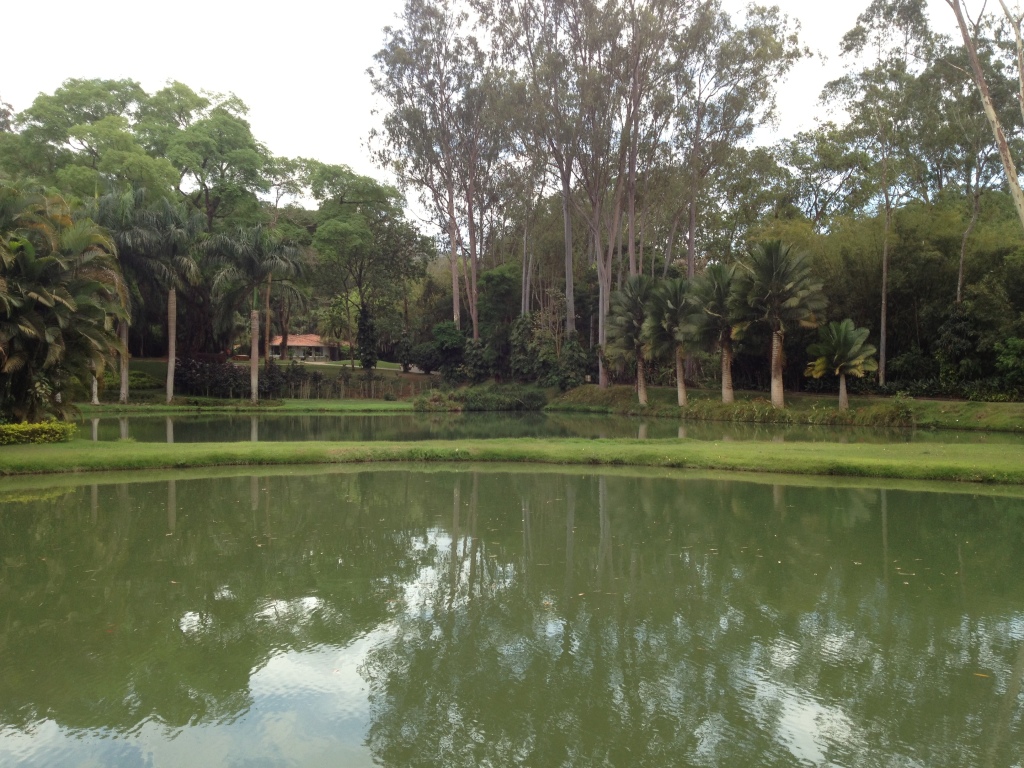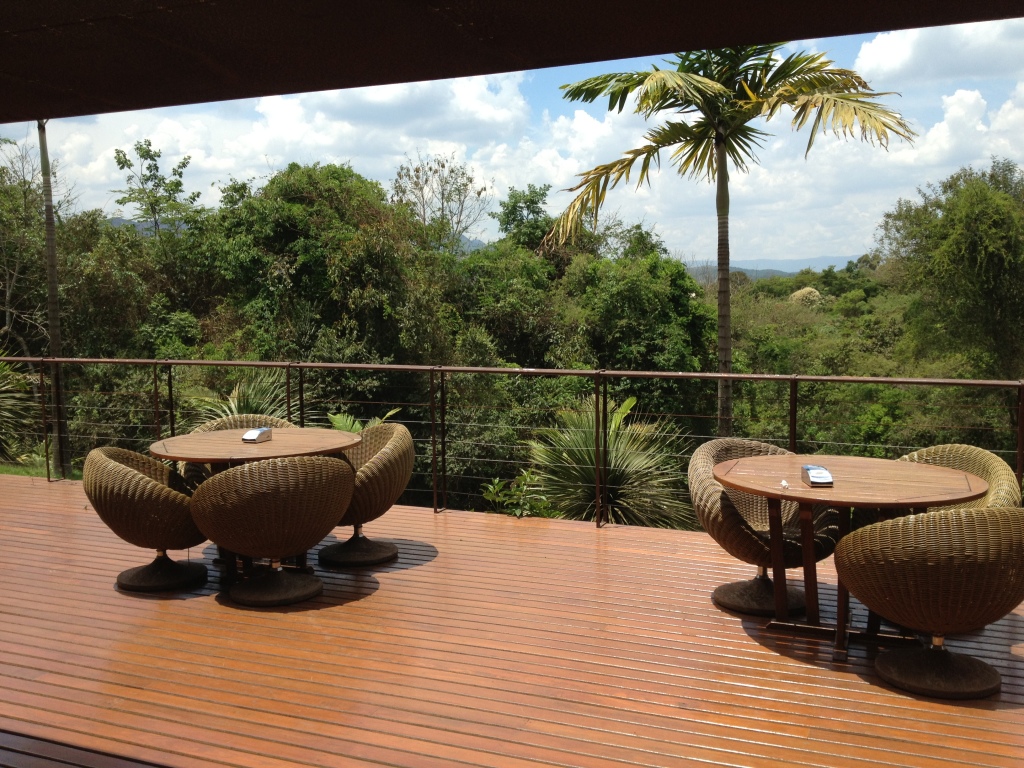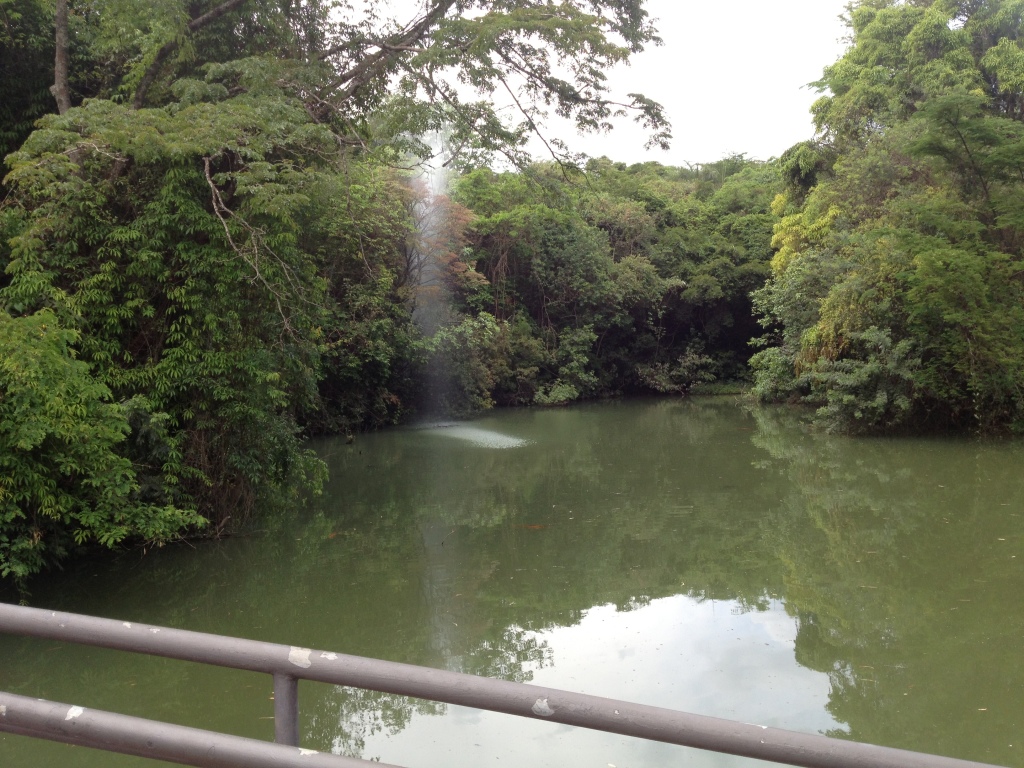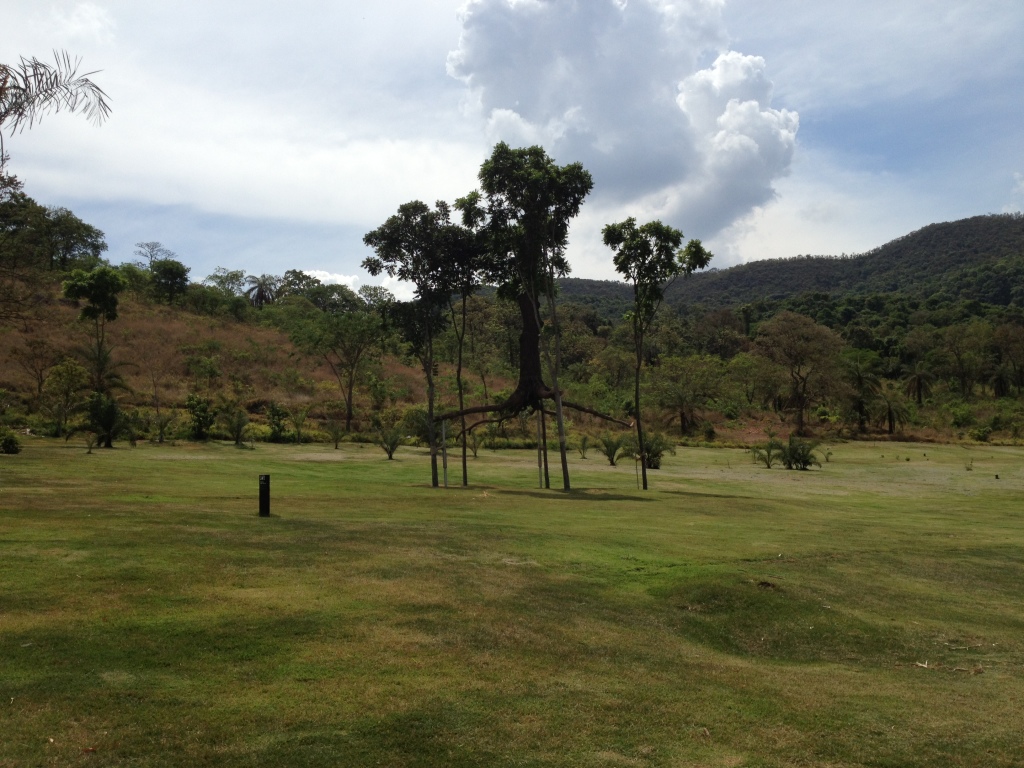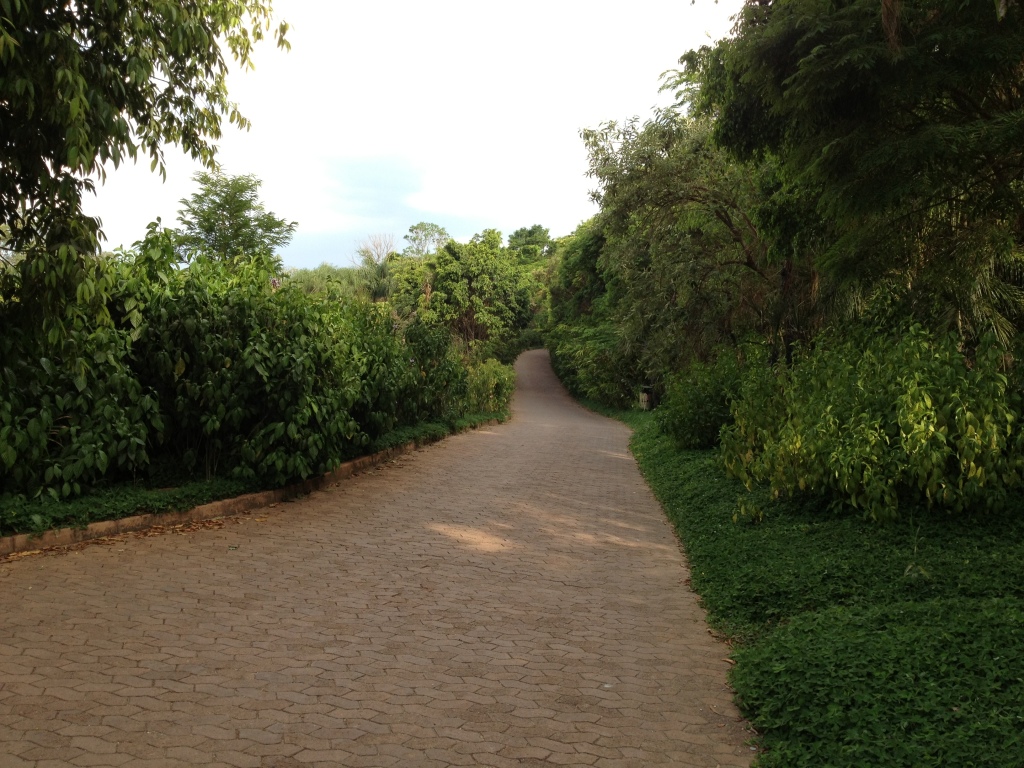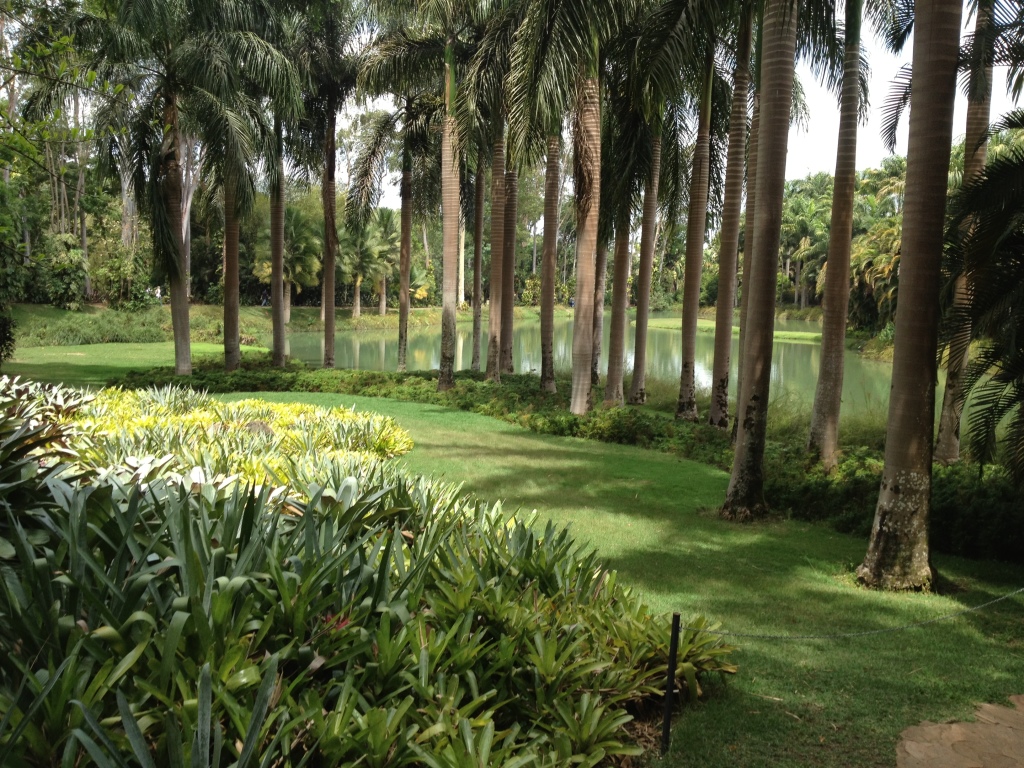For many people, Inhotim may seem like a far place, but for Bernardo Paz, a Mineiro (person born in Minas Gerais) mining mogul—and the visionary behind this fascinating place—distance is a matter of point of view.
In this unplugged paradise with over 1,400 species of palm trees planted in the 1980’s, lays an impressive collection of modern and contemporary art exposed in what you may call an open field, with landscaping by Roberto Burle Marx, or even further, a Disneyland of contemporary art in the state of Minas Gerais.
A panorama of tropical greenery gives way to 17 pavilions all devoted to contemporary art.
Glass walls let the light of the day illuminate purple ropes, a steady plume of cords leading into stairs thoughtfully designed with hardwood.
Sliding screen doors open onto plain-air lake, pure lush jungle.
On the veranda round whicker tables and chairs give air into serenity.
It’s so incredibly interesting, that visitors wonder what’s more mesmerizing: the landscape, or the art itself?
A visit to this institute is a fantastic cultural and sensorial experience. You need at least two days to understand this national ecstasy. From my hometown of Rio de Janeiro for example, it takes about 2 hours to fly to Belo Horizonte, the capital of Minas Gerais, and then another 2-hour drive to arrive in Inhotim.
In the parking lot there are only a few cars and a few parked buses. The place feels strangely devoid of the usual trappings of tourism. Where are all the enterprising Brazilians trying to sell stuff? And in a country as popular as Brazil, where are all the people?
They are coming, and Bernardo Paz is making sure that happens. For the past twenty years he has been working on this project, but only in 2006 it opened doors to the public. Hotels are still a 20 minute drive, but a new wind is blowing and the institute is surely to continue to evolve at a fast speed. In the next few years, Paz is working on a luxury development on a plot of land up the hill from Inhotim’s spot. When it comes to progress, nobody is investing on it like Bernardo Paz.
In an interview, when asked what Paz considers himself: a messiah, a collector, an entrepreneur, a philanthropist, a stimulator, or an eccentric millionaire, he answered that his worries concern more about intuition than nomination.
Bernardo Paz, now in his mid 60’s, was born in Belo Horizonte and has lived his entire life there. He presides over the iron mining company Itaminas. His personal life is a little on the convoluted side (six ex-wives under his belt) but his biggest accomplishment in life is to work for society, “because that’s where you leave your legacy”, he explained.
There are a lot of people who never heard of Inhotim, but Brazilians are seeing the place anew, as well as most of the people in the art industry. New work has been added and the entire landscape consists of almost 500 international artists. Today, is it safe to say that every artist, not just Brazilians, but from around the world, want to have his/her work exhibited in Inhotim.
Any visit to a museum in any major city of the world consists in entering a tall building, constructed in urban city, where you stay for an hour or two, look at a bunch of art work hanging on the wall, then you go back to your daily life two hours later, probably starting by lunch at a nearby restaurant.
This is not the experience you have in Inhotim. A visit here is designed to provoke thoughts, and to make you dream of your own goals and achievements. According to its creator, culture awakens curiosity, which awakens dignity, which awakens education—which is the base for everything.
A tour of the place offers sights both striking and educational: for instance, you can sit on a bench that is extracted from the most exotic species of wood in Brazil.
These benches alone are alluring in the sense of plant exploration, with their sculptural trunks and brown red wood.
A grove of thin tall palm trees sustains the roots of a standing tree in the middle of an empty arena.
Paths are long and beautiful, removing you from the world in which you live in.
As you look into each tall, full-leafed palm tree, the tree looks right back at you, aiming at your eyes, like a distant dream that seems most of the times impossible, and when you realize the magnitude of this place, looking back at that tree, anything seems possible.
What you take from visiting Inhotim is that you want to do something with your life. It makes you dream—and if you do—then Bernardo Paz feels accomplished and sure of his legacy.

